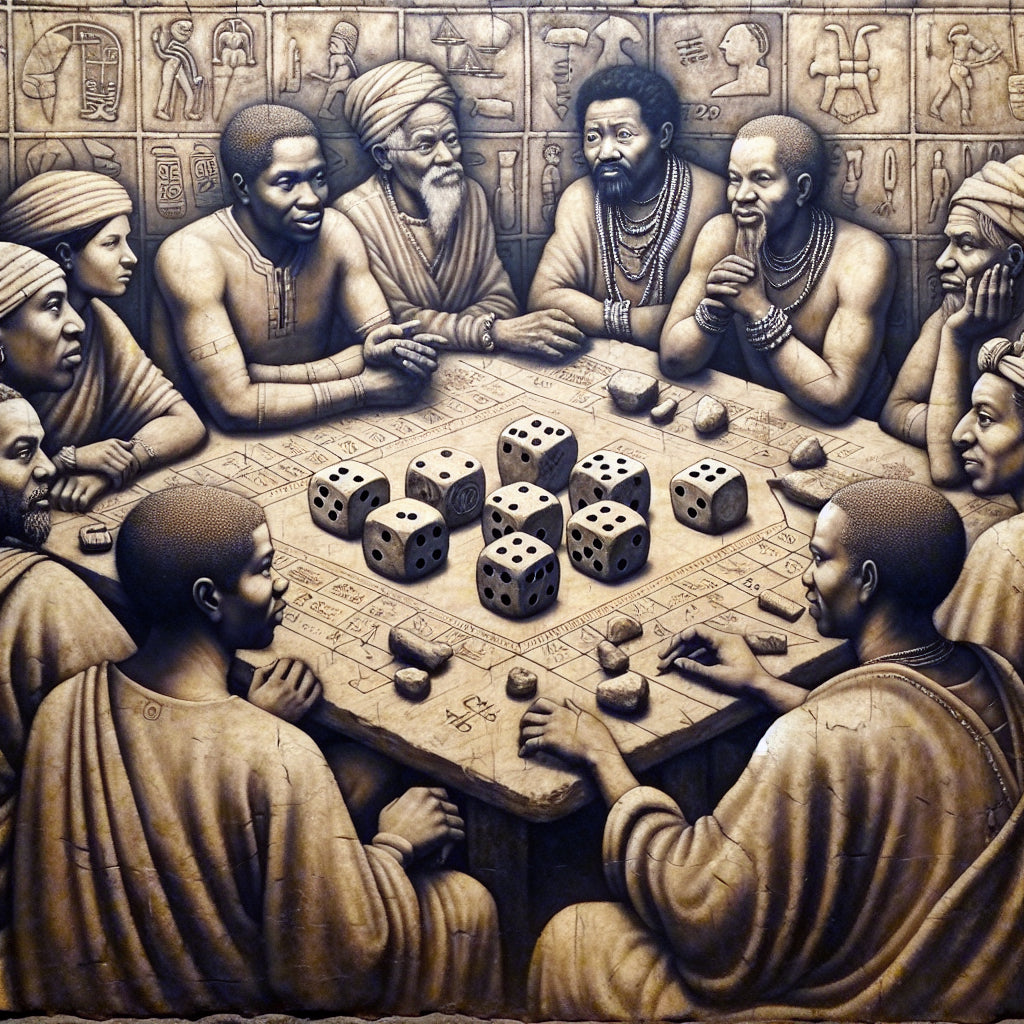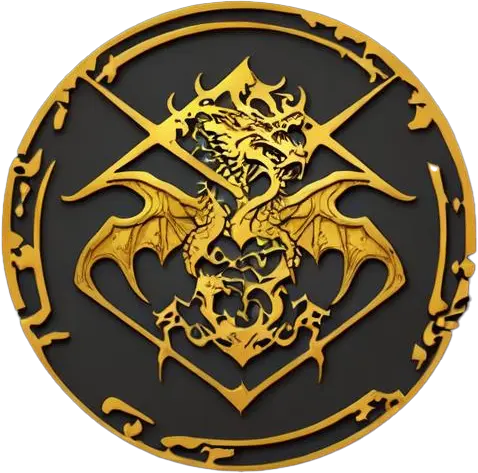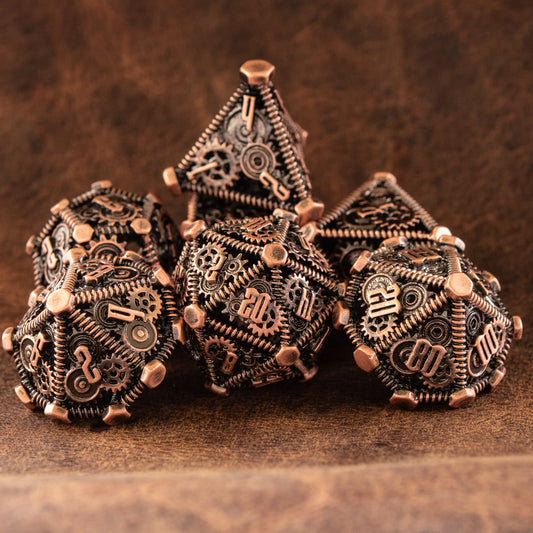
The Fascinating History of Dice: Why Were They Invented?
Share
The Fascinating History of Dice: Why Were They Invented?
Introduction
Dice have been a cornerstone of human entertainment and decision-making for thousands of years. From ancient civilizations to modern-day gaming, these small objects have played a significant role in various aspects of human culture. In this article, we will explore the intriguing history of dice, why they were invented, and how they have evolved over time.
Dice in Ancient Civilizations
Greek and Roman Times
Greek Mythology
In Greek mythology, dice were more than just gaming tools; they were instruments of divine decision-making. According to legend, the gods Zeus, Poseidon, and Hades gambled with astragals to divide control of the Earth. This mythological use of dice highlights their importance in ancient Greek culture, where they were believed to have the power to determine the will of the gods.
Roman Games
The Romans were also avid users of dice, incorporating them into various popular games. One such game was "ten," which involved dice made from materials like bone, ivory, bronze, onyx, marble, and amber. The widespread use of dice in Roman society underscores their significance as both a form of entertainment and a tool for decision-making.
Native American Games
Lewis & Clark Documentation
The exploration of the American continent by Lewis & Clark in the early 1800s brought to light the prevalence of dice games among Native American tribes. These explorers documented various dice games, providing valuable insights into the gaming culture of Native Americans.
Materials and Games
Native American dice were often crafted from natural materials such as antler, bone, or fruit pits. These dice were used in games like hub bubb, where players would throw the dice into a bowl. The use of these materials and the nature of the games reflect the resourcefulness and cultural significance of dice in Native American societies.
Early History of Dice
Ancient Origins
Knucklebones
The ancient ancestor of the modern die is known as the knucklebone or astragal. Early humans used these bones, typically from the ankles of sheep or other cloven-footed animals, as gaming tools. The transition from using natural objects like knucklebones to more refined dice marks a significant evolution in the history of gaming.
Materials
Early dice were made from a variety of materials, including pebbles, pottery, walnut shells, beaver teeth, peach stones, seeds, and buffalo bones. This diversity in materials reflects the widespread use and cultural importance of dice across different civilizations.
Cultural Significance
Egyptians and Chinese
Archaeological evidence shows that dice were used in ancient Egypt and China. Dice have been found in Egyptian tombs dating back before 3000 BC and in Chinese excavations from 600 BC. These findings indicate the long-standing presence of dice in human history and their importance in ancient cultures.
Magical and Divinatory Uses
Early humans often used dice as magical devices to deduce the future. This practice highlights the cultural significance of dice as tools for divination and decision-making, reflecting the belief in their ability to influence or predict outcomes.
Dice have evolved from simple objects made of bones and stones to intricate gaming tools used in various cultures worldwide. Their history is a testament to their enduring appeal and significance in human society. Whether used for gaming, divination, or decision-making, dice continue to captivate and entertain people across the globe.
Cheating with Dice
Historical Cheating
Cheating with dice is as old as the games themselves. Evidence of cheating dice has been found in ancient Egypt, Asia, and the Americas. These ancient civilizations used various methods to manipulate the outcomes of dice rolls to their advantage.
Ancient Cheating Methods
In ancient times, cheating methods were often sophisticated. For instance, in ancient Egypt, dice were loaded by drilling small holes and filling them with lead. This added weight to one side, ensuring that the dice would land in a predictable manner. Similarly, in Asia and the Americas, dice were often shaved or weighted to produce desired outcomes. These early examples of cheating highlight the lengths to which people would go to gain an upper hand in games of chance.
Loaded Dice
Loaded dice are perhaps the most well-known method of cheating. These dice are altered to ensure that they land on specific numbers more frequently than would occur by chance. Historical records and modern references, such as the movie "Ocean's 13," illustrate the enduring appeal and use of loaded dice. In "Ocean's 13," characters use loaded dice to manipulate casino outcomes, showcasing the continued relevance of this ancient cheating method.
Modern Cheating
In today's world, cheating with dice has evolved, particularly in the context of casinos and high-stakes gambling. Modern technology and strict regulations have made it more challenging to cheat, but it still occurs.
Casino Measures
Modern casinos employ a variety of measures to prevent cheating with dice. These include using precise, fair dice that are meticulously manufactured to ensure uniformity and randomness. Casinos also use advanced surveillance systems to monitor gameplay and detect any suspicious behavior. Dealers and pit bosses are trained to spot signs of cheating, such as unusual dice rolls or players attempting to switch dice.
Legal Implications
Cheating with dice in modern gambling is illegal and can result in severe penalties. Using asymmetric or loaded dice to manipulate outcomes is considered fraud, and those caught can face hefty fines, imprisonment, and permanent bans from casinos. The legal implications serve as a strong deterrent, ensuring that most players adhere to fair play.
Evolution of Dice Games
Dice games have evolved significantly over the centuries, from simple games of chance to complex and strategic games enjoyed worldwide.
Historical Games
Craps
The game of craps has a rich history, evolving from the ancient Arab game "hazard." It was popularized in Europe and North America, becoming a staple in casinos and gambling establishments. Craps involves players betting on the outcomes of dice rolls, with various betting options and strategies adding to its complexity and excitement.
Liar's Dice
Liar's Dice, also known as perudo or dudo, is another historical dice game with a fascinating origin. Spanish explorers learned the game from the Incas during their travels to Latin and South America. The game involves players making bets on the outcomes of dice rolls, with an element of bluffing and deception adding to its appeal.
Modern-Day Dice Games
Board Games and Casinos
In modern times, dice have become integral to a wide range of board games and casino games. From classic games like Monopoly and Risk to casino favorites like craps and sic bo, dice are essential components that add an element of chance and excitement. Video games have also incorporated dice mechanics, further expanding their influence in the gaming world.
Popular Culture
Dice have permeated popular culture, with phrases like "roll the dice" or "no dice" becoming common in everyday conversation. These expressions reflect the widespread familiarity and cultural significance of dice, symbolizing risk-taking and uncertainty. The enduring popularity of dice in various forms of entertainment highlights their timeless appeal.
Conclusion
Dice have a rich and fascinating history, evolving from ancient divination tools to modern gaming essentials. Their journey through time reflects their enduring appeal and significance in human culture. As we continue to roll the dice in various aspects of life, their legacy as instruments of chance and entertainment remains strong.
Call to Action
Explore more about the fascinating world of dice and their impact on human culture. Whether you're a history enthusiast or a gaming aficionado, there's always more to learn about these small but mighty objects that have shaped human civilization for millennia.
Summary of Main Points
- Dice have been used for thousands of years, evolving from ancient divination tools to modern gaming essentials.
- Cheating with dice has a long history, with ancient methods like loaded dice and modern casino measures to prevent fraud.
- Dice games have evolved, with historical games like craps and Liar's Dice giving way to modern board games and casino favorites.
- Dice remain culturally significant, with expressions like "roll the dice" reflecting their enduring influence.
Dice continue to captivate and entertain people across the globe, proving that their appeal is truly timeless.

